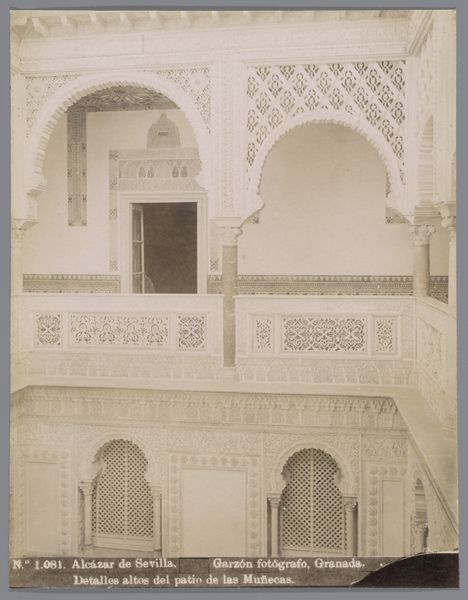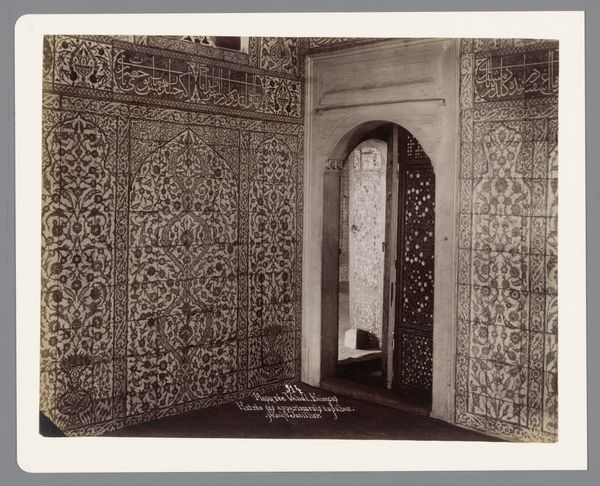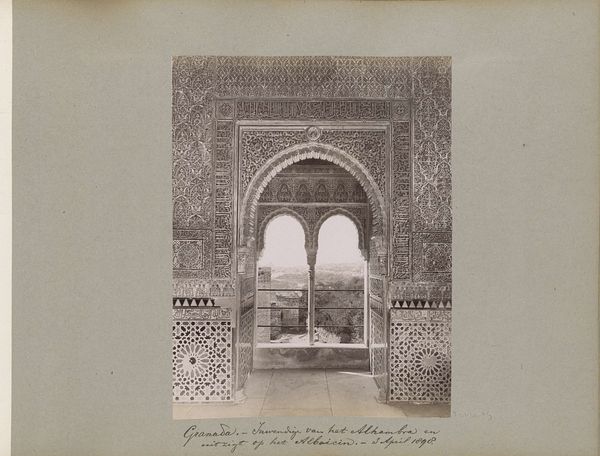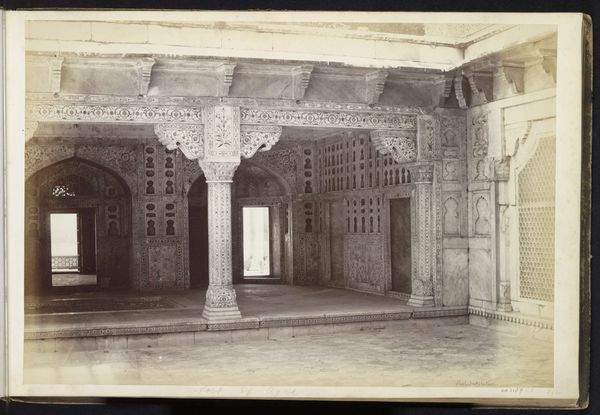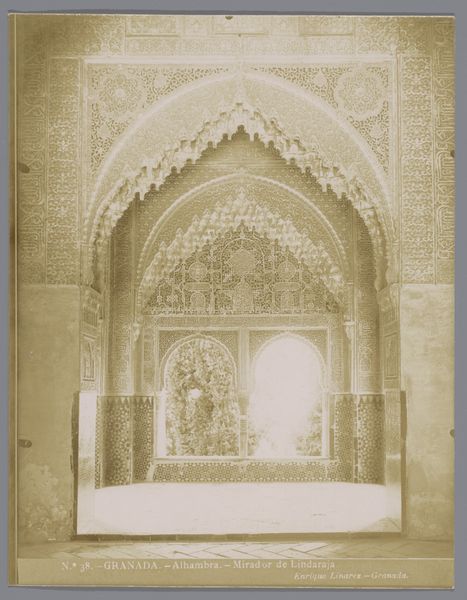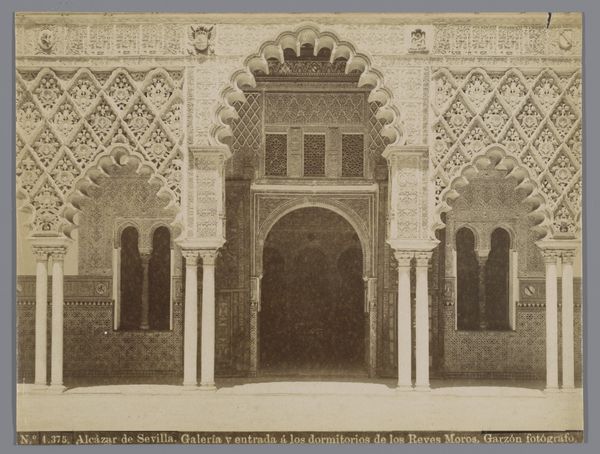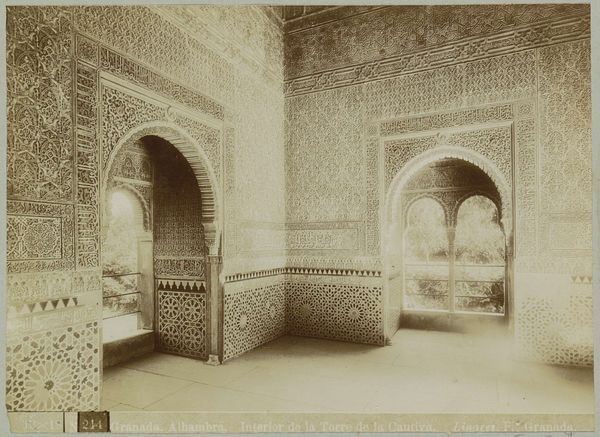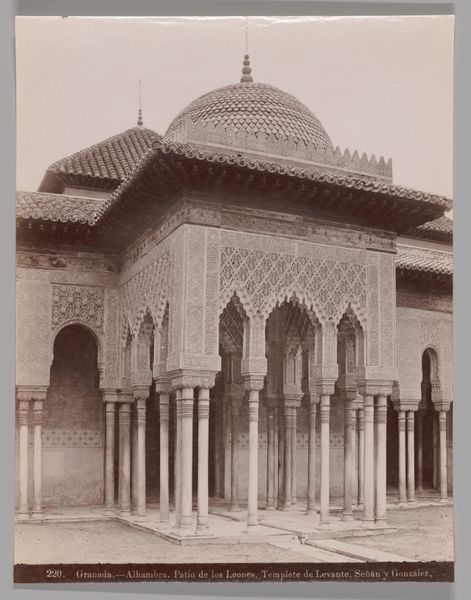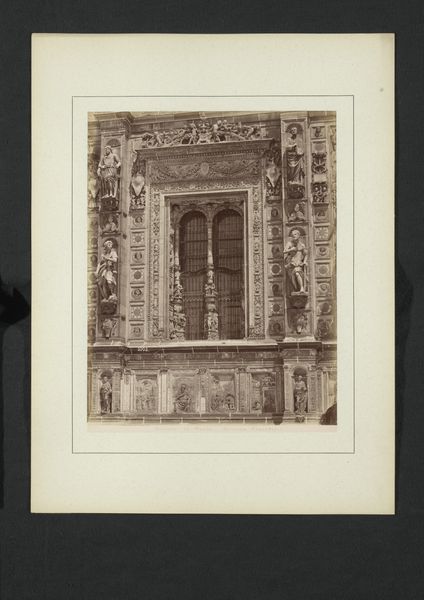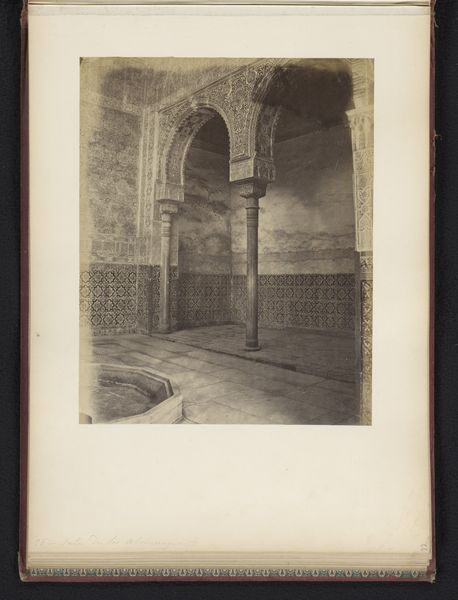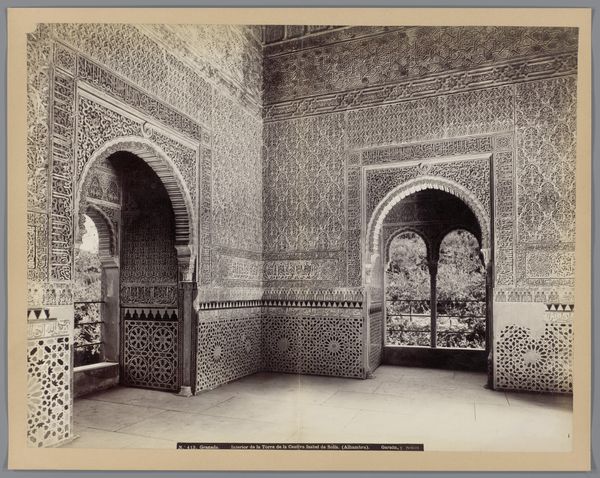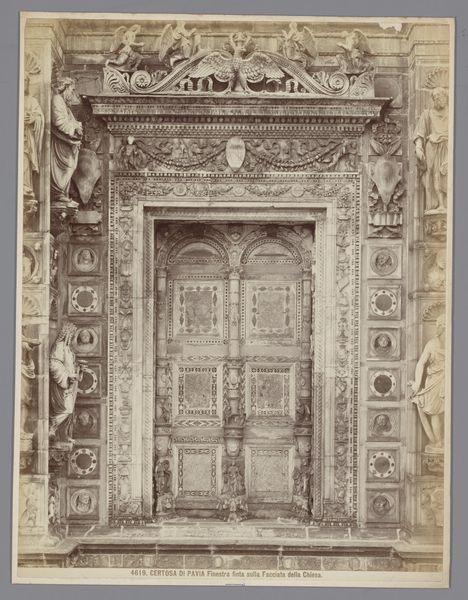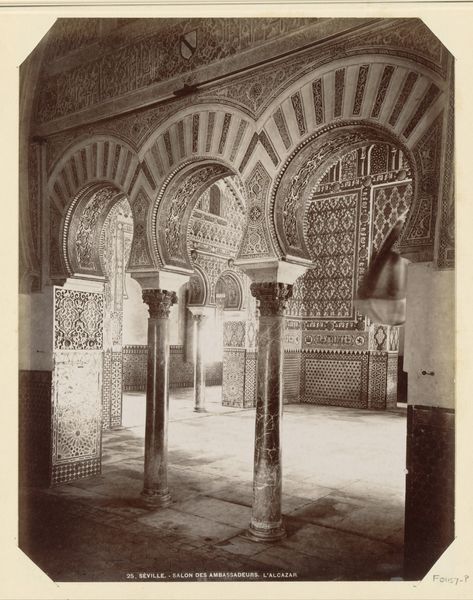
carving, print, metal, photography, architecture
#
carving
#
muted colour palette
# print
#
metal
#
sculpture
#
photography
#
geometric
#
islamic-art
#
decorative-art
#
architecture
Dimensions: height 264 mm, width 199 mm, height 286 mm, width 225 mm
Copyright: Rijks Museum: Open Domain
Curator: Lala Deen Dayal gifted us this detailed study, "Decorated marble screen in the Shahi Burj, Delhi", captured sometime between 1868 and 1900. Editor: It feels instantly serene, doesn’t it? The muted tones and the intricate geometric patterns almost vibrate with stillness. Curator: Dayal, a master photographer, really captured the essence of this architectural detail. Consider the Shahi Burj as a symbol of Mughal power. Now, who did this power benefit, and at what cost? We also have to think about representation in the colonial context. Dayal's access as an Indian photographer offered a perspective often missing in colonial imagery. Editor: The symbolism layered into the carvings fascinates me. Those floral motifs, so precisely rendered in stone…do they echo paradise, perhaps? The geometric latticework seems to play with light, obscuring and revealing at once. It speaks to me of contemplation, almost meditative. Curator: Precisely. And those geometric patterns aren’t arbitrary; they are laden with historical, cultural, and often religious meaning, deeply woven into Islamic artistic traditions. These choices challenge what narratives get centered. Consider that photography was burgeoning. So, this picture places India in a modern and historic context at the same time. Editor: And this layering hints at privacy, doesn’t it? Concealing the women and their domain is definitely part of its symbolism, which complicates things even more. Curator: Exactly. This creates a sense of tension—privacy for the elite women of the Mughal court contrasted with the photographer, Dayal's place and perspective in documenting it. Whose gaze are we really seeing? What does that act mean within a society undergoing profound shifts in power? Editor: It's a potent photograph that blends both peace and inquiry in perfect harmony. Curator: Yes, a perfect note to end on as we reflect on photography, power and progress.
Comments
No comments
Be the first to comment and join the conversation on the ultimate creative platform.

